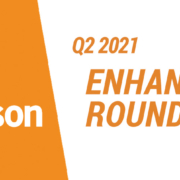5 Marketing Automation Best Practices
 Marketing automation is here to stay. While we’re ecstatic that companies both large and small continue to adopt MA at a frenetic pace, we feel it is important to remember that effective marketing using an automation platform should follow some fundamental best practices. We’re delighted to present to you 5 marketing automation best practices.
Marketing automation is here to stay. While we’re ecstatic that companies both large and small continue to adopt MA at a frenetic pace, we feel it is important to remember that effective marketing using an automation platform should follow some fundamental best practices. We’re delighted to present to you 5 marketing automation best practices.
1) Start small and build
Avoid deploying a huge campaign when you start out with MA. The temptation may be to run multiple campaigns as quickly as possible. But programmed marketing takes time to master – and you don’t want to risk alienating your markets. Develop a deployment strategy that includes all features but open with a few small campaigns and learn to master tactics before rolling out to a wider audience. You’ll minimize risk by starting small.
2) Create MA campaigns that build profiles and strengthen marketing practices
Effective automated marketing campaigns should qualify leads as they relate to a specific offer or opportunity, but deploying MA is also beneficial in discovering market behaviors through content consumption. The digital footprints your leads leave behind while engaged through marketing automation helps shape your customer persona. Use that data to develop stronger campaigns.
3) Don’t set to auto-pilot
It will be tempting to “set-it-and-forget-it” but campaign management is still required – especially early on. Though marketing automation creates efficiencies through automated functions, it’s important to stay on top of ongoing campaign results and tweak app settings, messaging, or other elements to maximize your results.
4) Create great content
Buyers are constantly getting targeted by content intended to attract and persuade. Having that content delivered routinely via MA is not going to instantly convert. Marketing automation, though an important and rapidly adopted technology, is but a tool. The key to effective MA campaigns is to provide content your markets want and need. A mix of formats is important. Deploy video, email, social posts, and other assets. Most importantly, project a consistent image across all your MA channels.
5) Test and test again
Not every MA campaign will achieve desired results. One of the strengths of MA is the ability to segment and target audiences. Prior to a general distribution, make sure messaging generates response for each market segment. Use A/B testing for each asset deployed through your MA platform to gauge click through, site time, conversion, and other KPIs. Marketing automation can reduce marketing costs and improve close rates but the effectiveness of the platform you use will depend on establishing best practices that work for your company. For more best practices, check out our other blog categories.



